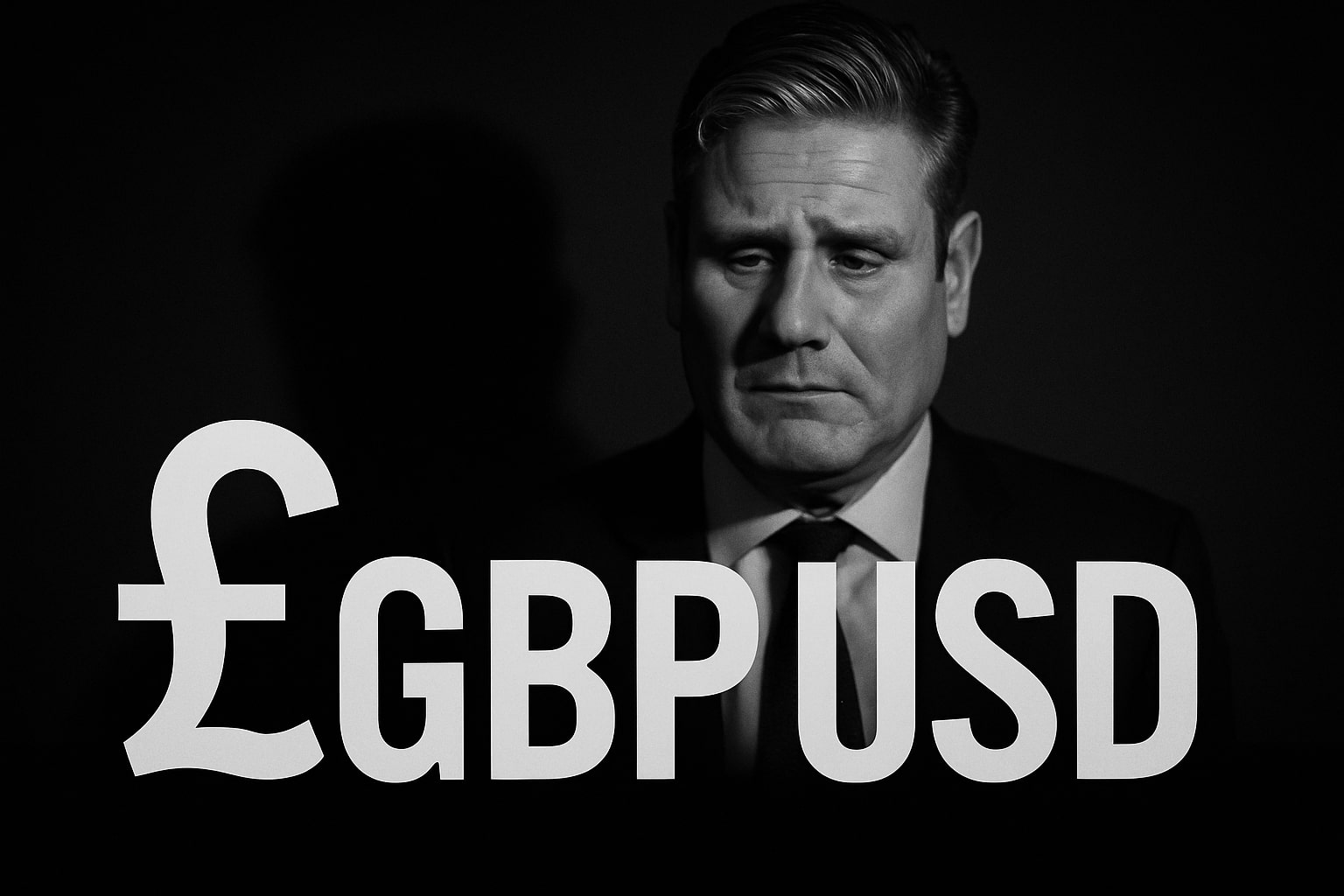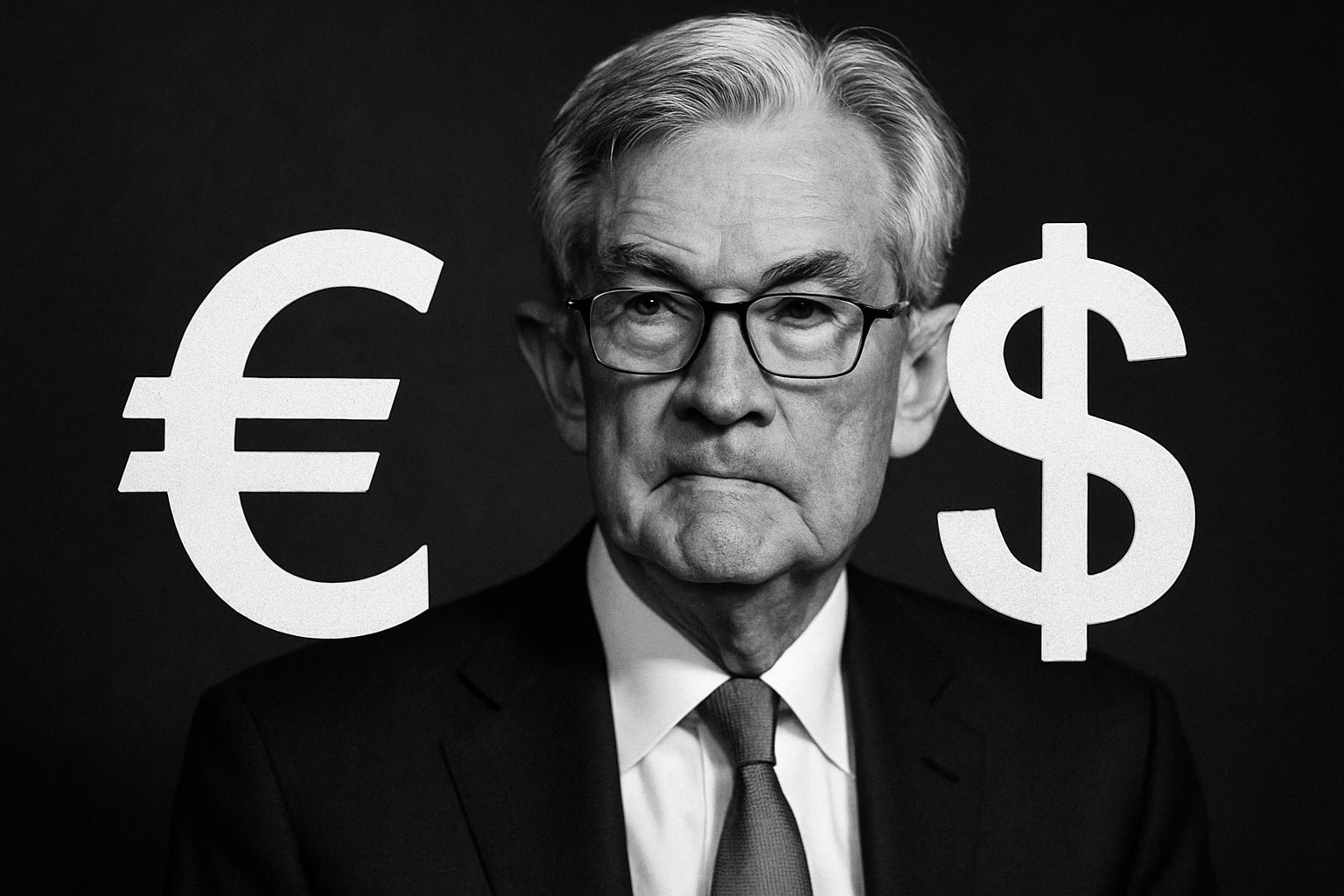EUR/USD Caught Between 1.1569 Resistance and Fed Policy Uncertainty
EUR/USD is locked in a tight but volatile range near 1.1550–1.1570, driven by conflicting signals from central banks, escalating geopolitical risk, and technical barriers that continue to hold firm. After testing the multi-month high of 1.1632 last week—the highest since October 2021—the pair has faced consistent rejection near the 1.1569–1.1571 level. Price action has turned sideways as traders weigh a potential Fed rate cut later this year against hawkish ECB rhetoric. Despite last Friday’s volatility triggered by Iranian strikes and Israeli retaliation, the euro stabilized on Monday and Tuesday, holding above 1.1550 in European hours.
Fed Dot Plot, Retail Sales, and DXY Movement Tighten the EUR/USD Noose
The U.S. Dollar Index (DXY) is trading just under 98.10, still consolidating after bouncing off support at 97.87 and failing to decisively clear 98.42—the 50-EMA. Markets now price in a 62% chance of a Fed rate cut by September, while the current policy rate remains steady at 4.50%. The spotlight this week is firmly on the dot plot and Powell’s press conference, which could signal a shift toward easing or delay it beyond Q3. A dovish tone would likely break EUR/USD above 1.1571 and retest 1.1615, with extended upside toward 1.1657 and even 1.1700 if macro support builds. Conversely, if Powell signals hawkish patience or the economic projections firm up inflation risks, EUR/USD may unwind toward 1.1510, with further downside toward 1.1473 and 1.1430—both aligned with Fibonacci and trendline confluence.
Technical Breakdown: Momentum Slowing at Key Resistance but Bulls Still in Play
From a technical perspective, EUR/USD remains inside a broad ascending channel on the daily chart, with support near 1.1500–1.1510 still holding decisively. The 14-day RSI hovers near 65, suggesting the pair is approaching overbought conditions but has not yet triggered reversal confirmation. 1.1532, the 38.2% Fibonacci level, serves as the initial downside checkpoint, followed by 1.1502 (50% retracement) and 1.1473 (61.8% retracement). The channel’s trendline support and the 50-period EMA on the 4H and daily timeframes continue to support bullish momentum as long as EUR/USD stays above 1.1481. That said, rejection at 1.1571 has now occurred multiple times, forming a short-term head-and-shoulders setup, with 1.1569 as a pivotal neckline.
Why the Euro Is Holding Up Despite Middle East Shockwaves
Despite military action between Israel and Iran and aggressive rhetoric from former President Donald Trump, EUR/USD has absorbed the geopolitical shock surprisingly well. Trump's recent call to evacuate Tehran and his social media threats to the EU and pharma sector sparked flight-to-safety flows, but those flows were largely absorbed by gold and bonds, with limited boost to the U.S. dollar. This reflects diminished safe-haven demand for USD—a major shift from past conflict episodes. The fact that EUR/USD remained above 1.1500 during Friday's risk-off move is a strong signal that dollar strength is conditional on the Fed, not just fear. With the ECB striking a more hawkish tone and Nagel’s comments downplaying imminent rate cuts, the euro continues to benefit from diverging expectations.
EUR/USD Order Flow and Trade Positioning Reflect a Bullish Lean, But Reversal Risks Climb
Trade setups suggest short-term traders are watching 1.1481 and 1.1408 as long reentry zones, while shorts look to re-engage at 1.1569 and 1.1640. The most recent long signal triggered a bounce from 1.1481, with a stop under 1.1400 and profit targets at 1.1560 and 1.1640. Meanwhile, short positions are targeting 1.1400, with stops set just above recent highs. Traders are increasingly wary of the potential for a breakout failure. If the pair fails again at 1.1571, a correction to 1.1430 or even 1.1361 (a key neckline from a prior bearish formation) is on the table. Volume data and open interest are also suggesting positioning is becoming crowded near the highs.
DXY Symmetrical Triangle Builds Ahead of Fed Guidance
The DXY is coiling inside a symmetrical triangle on the H4 timeframe, compressing between 98.28 (the 50-EMA) and 97.87. If a breakout occurs, the immediate resistance lies at 98.58, followed by 98.91 (the 200-EMA). On a downside break, key support zones at 97.60 and 97.30 could come under fire. As of now, price action suggests hesitation rather than conviction, meaning traders are waiting for the Fed’s signal. Without a hawkish catalyst, the dollar remains capped, leaving EUR/USD supported structurally.
Can EUR/USD Break Through 1.1571 or Will Profit-Taking Drag It Back to 1.1400?
That’s the defining question heading into this week’s heavy data and policy slate. If U.S. retail sales miss forecasts on Tuesday or if Powell’s tone is even modestly dovish, the euro has the setup to break cleanly above 1.1571, with 1.1615, 1.1657, and 1.1700 the next visible resistance zones. However, if Powell reaffirms higher-for-longer messaging or suggests tapering balance sheet reduction will slow, it could reignite USD strength, capping the euro and driving a correction to 1.1430–1.1400.
Buy, Sell, or Hold EUR/USD at These Levels?
Based on macro divergence, technical resilience above 1.1500, repeated support at trendline and EMA confluence, and softening dollar yields, the EUR/USD bias remains bullish. But the overbought RSI and repeated rejections at 1.1571 argue for tactical caution. The best high-probability setup is to Buy dips toward 1.1481 or 1.1408 with stops under 1.1360, targeting 1.1570, 1.1657, and 1.1700. Shorting should be reserved for clear breakdowns below 1.1480, with targets near 1.1430 and 1.1400. For now, EUR/USD is a Buy-on-Dip—but traders must watch the Fed closely for any shift that could reverse the bullish script.




















